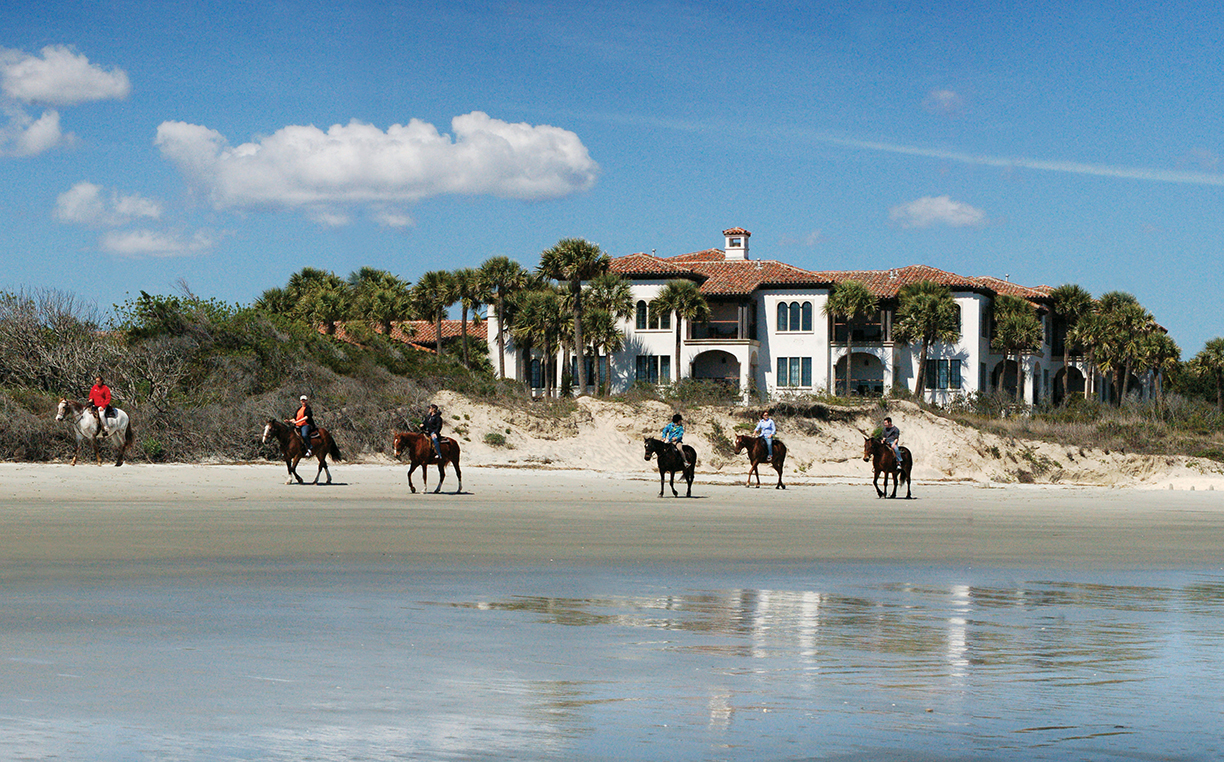To commemorate the 50th Anniversary of Unique Homes, we’re taking periodic trips back in time to explore previous anniversary years. In our 45th Anniversary Edition, writer Camilla McLaughlin talked about the six trends buyers were considering when purchasing a waterfront property. It was years after the recession earlier in the decade, but its ripple effects still could be felt, impacting the behavior of buyers and sellers. Today, with the pandemic a factor, which of these trends do you think are still applicable?
Thirsting for the Water
By Camilla McLaughlin
An expanse of ocean or lake, waves lapping the shore and lots of sand to sift through your fingers are at the heart of living on the water. For new resorts, except in ski locales, waterfront has become a “must-have” component, says Andy Carmody, president at the residential division of Crescent Communities.
Whether resort or an individual home, waterfront is considered a prime investment. As more people are looking outside of city metropolises to buy homes, the strong momentum for waterfront houses is going to continue into the new year. Demand for these types of properties has been incredibly strong due to the unique nature of waterfront and riverfront properties,” says Sherry Chris, president and CEO of Better Homes and Gardens Real Estate.
Authenticity
Waterfront’s cachet might be powerful, but planners, such as Carmody, know it takes more than sun and sand to create a winner in today’s market. Authenticity rooted in a local or regional culture, architecture that facilitates lifestyle, and a range of amenities and experiences are as much part of waterfront’s vision as sun and sand. For example, The Residences at Seafire in the Caymans just opened, and already it’s apparent that features tied directly into a family experience are as important to potential buyers as a location on Seven Mile Beach.
Not Just Oceanfront
And waterfront isn’t necessarily oceanfront. Instead it could be a lake or river. Palmetto Bluff in South Carolina includes 32 miles of waterfront, including ponds, lakes, the river, and even a silky beach on a sandbar revealed when the tide recedes.
More Ways to Enjoy
A resort that doesn’t have a residential component along with a premium hotel is becoming a rarity. Already this trend is playing out in new hotel properties such as 1 Hotel in Miami Beach as well as in classic resorts redefining their focus. For example, The Cloister at Sea Island (pictured at right) has added a shared ownership component to appeal to consumers who want the same high level of service, but want to make less of a commitment, whether it’s time or money. Expect to see more single-family components, as well as shared ownership opportunities in new resorts. For developers, it’s often part of a financial imperative, but it’s also a match for the multiple lifestyles of affluent consumers today.
No Longer Just for Vacations
A growing trend in some locations is for families to opt for a waterfront lifestyle fulltime. In places such as Del Mar and La Jolla in California, a number of newcomers are forsaking larger homes inland for a smaller residence on or near the water, simply because of the lifestyle.

Island Hopping
Private islands may be a specialized niche, but demand has grown significantly since the recession. According to Sotheby’s International Realty, conservation and the desire to preserve natural spaces and rare ecosystems is one incentive to own an island.
Keeping it Green
Increasingly developers also recognize this desire to honor the land, and some of the newest developments in the U.S., Mexico and the Caribbean reflect environmental stewardship. Mayakoba on Mexico’s Rivera Maya has become as much a nature preserve as a resort. Development directly on the ocean is restricted to a limited number of properties.


Leave a Reply